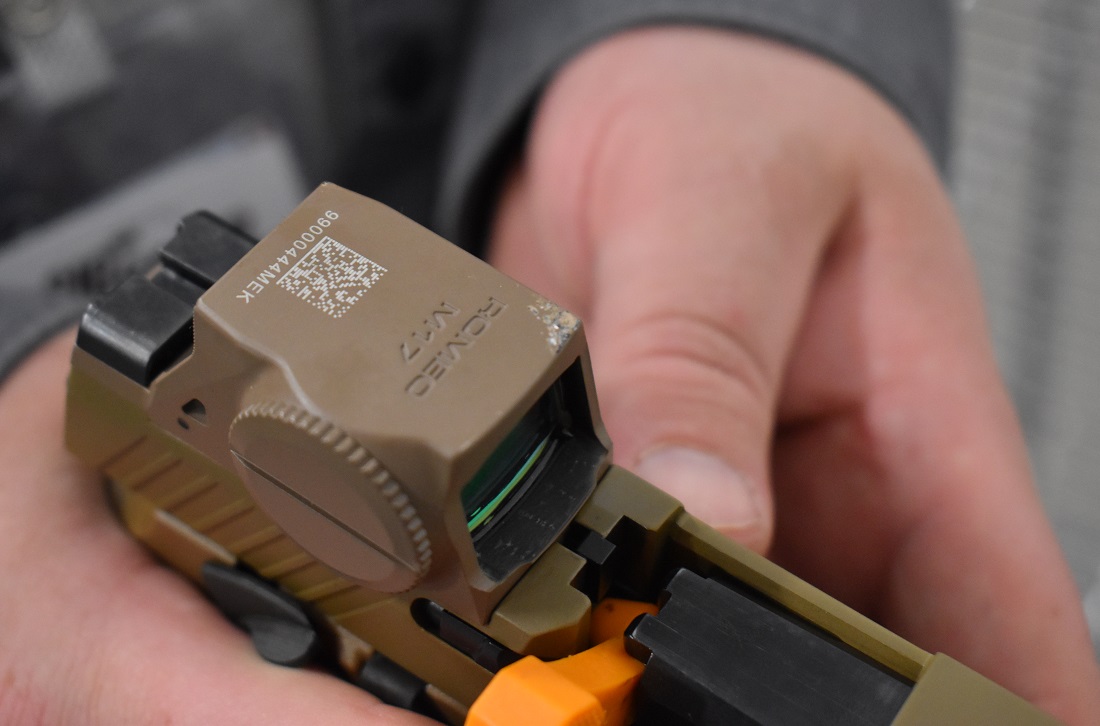Why a flexure arm matters in a pistol red dot…
SIG debuted the closed emitter Romeo M17 – which, as its name would imply, is built from the ground up as a near “bomb-proof” red dot for the military’s M17 and M18 Modular Handgun System pistols – earlier this year. Constructed of forged 7075 aluminum with a beryllium copper flexure arm (more on that in a minute) the Romeo M17 has an extremely low deck height so that armorers can reuse standard iron sights, has 15 illumination settings (including three for use with Gen 3+ night vision), beats drop and submersion tests, and, importantly, has an integral loaded chamber gas deflector shield that keeps the MHS from gassing up the lens after 10-15 rounds.
The sight has been spotted in military use, it has been submitted to the Army’s Soldier Enhancement Program, it has an NSN number, and SIG tells us a large public safety contract announcement is soon to break on the optic as well.

The Romeo M17 is a hoss. This installed example I saw dropped from 10 feet onto concrete at SIG’s plant in Oregon earlier this year with nothing but cosmetic damage to the housing. SIG explained to Guns.com that the Romeo M17 has surpassed 100,000 rounds in testing without loss of zero or parts breakage. (All photos except noted: Chris Eger)
Part of what makes the Romeo M17 so tough is an innovative beryllium copper flexure arm that replaces springs with a much more robust part – which adds to durability – and helps drop the deck to allow a better co-witness with standard iron sights.

Installed near the base of the Romeo M17, the arm provides a backbone – so to speak – for the sight, cutting down on the number of parts that can fail.
The problem is, the Romeo M17 uses a unique mounting footprint, one that has six leverage points and uses 40 pounds of torque with a single optics plate mounting screw. In short, unless you have an M17 or M18 military or commemorative handgun, you can’t mount it.
That’s where the Romeo X comes in.
More in my column at Guns.com.

